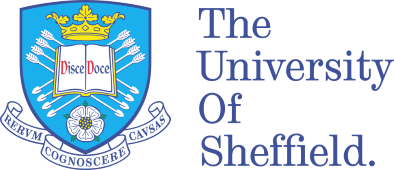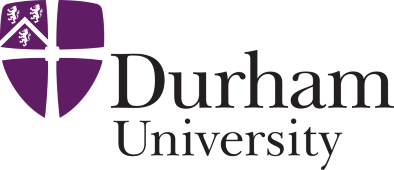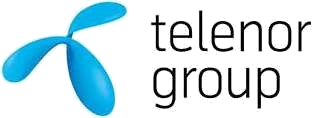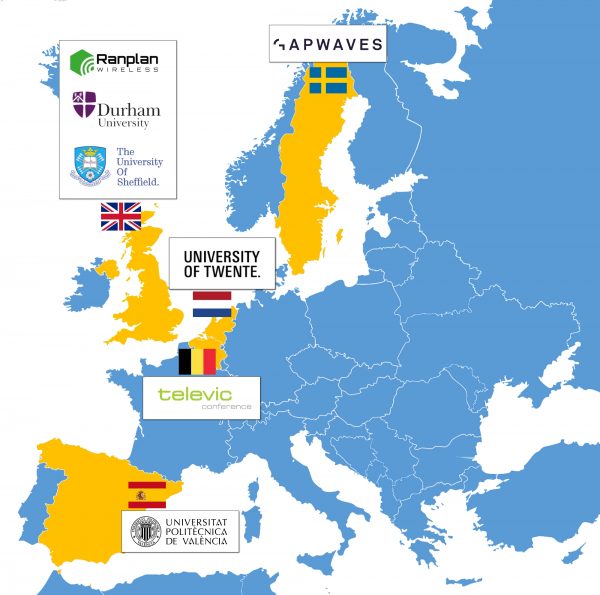
The University of Sheffield (USFD)
USFD is a world‐class university and home to six Nobel Prize winners. Ranked 84th by the QS World University Ranking in 2016 it was one of the top 50 beneficiaries of FP7. Inventions and discoveries by USFD staff and students have had great impact in our lives, e.g., the invention of stainless steel, the discovery of Vitamin D, the purification of penicillin and its first recorded clinical use, etc. Today, USFD has one of the top 3 Engineering Faculties in the UK. In the recent Research Excellence Framework 20141, USFD is in the top 10% of all UK universities, with 86% of its research judged as world leading or internationally excellent.
The project will be hosted by the CRG (Communications Research Group) at the EEE department and the Urban Institute. CRG has been internationally renowned for fundamental electromagnetics (EM) research for over 40 years. It is also a world leader in small cell/HetNet and green communications research. It is one of the best places in the world to research wireless communications in the built environments. The group has 15 academic members of staff and over 80 postdoc and PhD students. The main research areas include femto/small cell, HetNets, wireless friendly buildings, radio propagation, green communications, communications in the built environments, smart building, miniaturised antennas/periodic structures, and tunable antenna systems. It is a founding member of the Wireless Friendly Buildings Forum which researches and advises on matters relating to radio propagation within and between buildings.
The Urban Institute at USFD provides an intellectual environment within which highly innovative, multi-disciplinary research is stimulated and undertaken. The institute is host to one of four UK Royal Academy of Engineering Centre’s of Excellence in Sustainable Building Design. Its strategic partners include engineers, architects, landscape architects, developers, planners, policy makers, etc.

University of Durham (UDUR)
UDUR is the 3rd oldest university in England and is currently ranked at 74th and 96th in the QS and THE world rankings (2016-17) respectively. The University has ~16,000 students and employs over 3,500 staff in 25 academic departments.
The School of Engineering and Computing Sciences undertakes research in a number of fields. The School’s work is organised through five Groups including Electronics which is home to two of the University’s research Centres; Centre for Molecular and Nanoelectronics and Centre for Communication Systems (CCS). The School has a strong record of collaborative research supported by funding from industry, government organizations such as the DTI, Ofcom, HMGCC, Engineering and Physical Science Research Council (EPSRC), and EU grants. The University is part of a European-wide collaboration (ImpactE) funded by FP7 and has received several ERC grants. In the recent REF2014 exercise, 90% of Durham’s Engineering research was ranked as world-leading and internationally excellent, and for impact Durham’s Engineering submission was ranked 4th in the UK.

University of Twente
The University of Twente is a modern, entrepreneurial university, leading in the area of new technologies and a catalyst for change, innovation and progress in society. Our strength lies in our capacity to combine. We are working on future technologies including: ICT, biotechnology and nanotechnology for which behavioural and social science research are essential. After all, the most interesting and relevant innovations take place at the cutting edge of these technologies and their impact on humanity and societies.
The UT has powerful research institutes that focus on nanotechnology, ICT, biomedical technology and technical medicine, governance & behavioural sciences, engineering and geo-information sciences and earth observation.The institutes combine scientific excellence with a keen eye for commercial knowledge valorisation (the transformation of complex knowledge into economic activity) and social applications: they are successful in generating spin-off businesses. Science is all about talent. The University of Twente is attractive due to the high-value research environment it offers and the opportunities for both senior and junior scientists. New research talent is attracted via the Twente Graduate School and via tenure tracks. Current openings can be found on the job-openings page.

Universitat Politècnica de València (UPV)
Universitat Politècnica de València (UPV) is a public research and training institution. The UPV maintains strong links with its social environment and a strong presence abroad. Currently, the University community consists of over 42.000 people. Of these, nearly 2.600 are members of the teaching and research staff. The Institute of Telecommunications and Multimedia Applications (iTEAM) is an official research centre of the UPV, which performs its research and development (R&D) activities in the field of Information Society Technologies (IST). The iTEAM is organised in 8 research groups, joining more than 140 researchers, who cover most of the scientific areas related to the Telecommunication Engineering field. The Mobile Communications Group (MCG) of the iTEAM Institute will provide to this EID its expertise in the Radio Propagation and Signal Processing fields, in particular in the areas of MIMO beam tracking and human RF models for the planning and optimisation of in-building millimetre wave communication systems.

Ranplan Wireless Network Design Ltd. (RPN)
RPN is a research intensive SME that produces the world only all-in-one indoor/outdoor small cell/HetNet planning and optimisation tool – iBuildNet®. RPN also produces a radio propagation tool based on 3D ray tracing/launching – RRPS (Ranplan Radiowave Propagation Simulator), which is one of the most advanced in the world.
RPN currently employs some 30 people (about 25 FTEs) in the UK and 60 worldwide. It is headquartered in Cambridge area, UK and has offices and operations in Europe, US, China and the Middle East. 50% of Ranplan employees have PhD and/or Master degrees.
After 4 years development, testing and trials, RPN released its flagship product iBuildNet in June 2013. Since 2014, iBuildNet has been selected by largest network infrastructure vendors such as Huawei, Ericsson, Cisco, Nokia and ZTE, and some of the largest mobile operators such as China Mobile, American Movile, Telenor and Ooredoo for indoor DAS and indoor-outdoor small cell/HetNet deployment. iBuildNet and RRPS are also being used by over a dozen universities to research wireless communications.
RPN was named as one of the top 10 B2B Movers and Shakers at Mobile World Congress 2016.
RPN’s Missions: To make iBuildNet the tool of choice for RAN planning/optimization in the HetNet and IoE era; By 2025, over 50% of wireless users will have used the networks planned and optimized by iBuildNet tool suite.

Televic Conference
Televic Conference NV was founded end of April 2010 following a partial split-up executed by Televic NV and this retroactive as of 01-10-2010. For each activity a new company was established, i.e. Televic Healthcare NV, Televic Conference NV and Televic Rail NV.
Annually 10% of the turnover is used for R&D. Since the turnover has increased heavily in the last 3 years, the R&D budget has also heavily increased.
Televic Conference aspires to evolve its range of products with the available technologies and to pioneer on the market with new technologies. Therefore the necessary basic research is also being conducted. The result of such a research project is first of all always used in one of the Televic systems. Once that system is accurate, the acquired knowledge is also used for the development of other Televic systems. The research activities focus on audio, video and (wireless) networks, and are normally conducted in collaboration with universities and research institutes.
Examples of recent major R&D developments are the wireless conferencing system (Confidea, 2.4 GHz and 5 GHz) and the multimedia conferencing system (Unicos).
Televic Conference has submitted six European patents. A process is in place to identify new possible patentable ideas that relate to the different technological solutions that Televic Conference develops.

Gapwaves AB (GAPWAVES)
Gapwaves was formed in 2010 and listed on First North – NASDAQ OMX NORDIC in 2016. The company develops hardware and manufacturing methods for millimeterwave RF front-ends and antennas, to be used in radio links and 5G antenna systems. The company has also some specific wideband antenna products for frequencies below 10 GHz, to be used in micro base stations and as feeds in reflector antennas (mainly radio telescopes). The technologies are based on intellectual property (IP) originating from the research in the late Prof. Kildal´s research group. Gapwaves AB gathers and owns several patents and patent applications.
Partner Organizations

Axión Infraestructuras de Telecomunicaciones S.A.U.
Axión is a national wholesale operator of telecommunication infrastructures and services in Spain. Axión operates as a neutral-host manager and integrator of infrastructures offering Audiovisual Communications and co-location for broadcasters and retail operators, to which it offers engineering, turnkey projects and 24/7 maintenance services. Axión is also specialized in Critical Communication services for Security forces, Telemetering networks and IoT solutions.
Axión currently manages more than 5,000 points of services distributed throughout the country, in more than 600 locations, for Television and Radio Broadcasters, Telecommunication Operators and Public Administrations. Axión provides agile, flexible and optimal access to its infrastructures and networks that extends well beyond urban areas, meaning a real opportunity to the regional and rural areas too.
Axión is certified at ISO 9001 standards on Quality Management Systems (Maintenance of External Networks of Radio Telecommunications Equipment) and ISO 14001 on Environmental Management Systems, in order to maintain the highest commitment to quality, sustainability and respect for the environment.
To reinforce its offer, Axión has recently founded two subsidiary companies:
Iberia Small Cell Networks: specialized in providing coverage in extreme densification environments with growing demand for mobile telephony and data, offering distributed antenna systems (DAS) and Small Cells.
AXENT: specialized in providing backhaul, backbone and access transport services to telecommunication operators over its own Fiber and Radio network, services such us Dark Fiber Rent, Capacity dedicated lines and Data Center interconnection.
Axión is also a founding member of UNIRED, an association of telecommunication infrastructure operators in Spain and EWIA (European Wireless Infrastructure Association), within the framework of the European Union, developing the interests of the Telecommunications sector in these areas.

Telenor Group
Telenor Group connects its 173 million customers to what matters most. Connecting the world has been Telenor’s domain for more than 160 years and we currently operate across Scandinavia and Asia. Our more than 20,000 employees are committed to responsible business conduct and driven by the ambition of empowering societies.
We have four behaviours that guide the way we work:
- Always Explore. We believe growth comes from learning every day. We’re curious and we dare to challenge, test, fail fast and pivot.
- Create together. We believe diverse teams find better solutions. We seek different perspectives, share, involve and help each other succeed.
- Keep promises. We believe that trust is key in all our relationships. We take ownership and pride in delivering with precision and integrity.
- Be respectful. We believe in the unique human ability to understand what matters for people. We meet everyone at eye level, listen and show that we care.
For more information, please visit www.telenor.com.

Nokia Bell Labs
Nokia Bell Labs, the industrial research division of Nokia, continues to conduct innovative and game-changing research around the big issues affecting the ICT industry. Using its wide-reaching expertise and collaborating with the global innovation community (both inside and outside Bell Labs), the organization is focused on finding solutions that offer a 10x (or more) improvement in multiple dimensions. These solutions will then be used to create cross-discipline ‘Future X’ initiatives that will shape the future communications landscape.
Bell Labs Espoo is located on the bustling Nokia Headquarters campus, one of Nokia’s largest R&D sites.
Our location actively collaborates with Finnish Universities and research centers like Aalto University, University of Helsinki and VTT Technical Research Centre of Finland.
Research
Our research focuses on mobile technologies covering radio systems, networking, security, and related hardware and software product technologies. Our teams have been key contributors to 3G and 4G standards and continue our strong role in standards contributions by actively contributing to the standards of 5G technologies.

